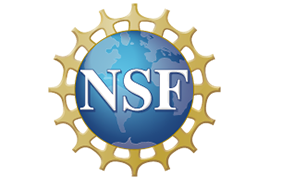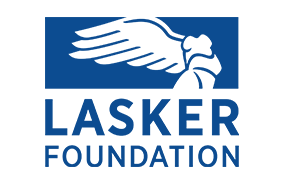Welcome to the moderator’s page for the Business Concepts for Life Sciences course
The purpose of this page is to share training and marketing materials that would minimize the effort required for individuals at other institutions and groups to offer the workshops. The Business Strategy workshop has been adopted and delivered by career center staff at UT Southwestern Medical Center in Dallas, TX, Memorial Sloan Kettering Cancer Center in New York City, the Harvard Graduate Student’s Consulting Group and Business Club in Cambridge, MA, and Stanford University’s Biotechnology and Business Course.
This training is designed for graduate students, postdocs and junior faculty who wish to gain a basic understanding of business fundamentals. The goal is to impact participants’ career readiness by helping prepare scientists who want to start their own labs, and inform scientists who want to go into industry.
Course Delivery
This workshop can be delivered in person as a flipped classroom or in virtual learning environments. For both formats, participants will benefit most by watching the videos before the class meets, and discussing the cases in the group setting. In both formats, start each session by reviewing major concepts with everyone to get them on the same page before separating into groups.
For the in-person flipped classroom, we suggest planning 60 to 90 minutes for the interactive class discussion. The venue size may be a limiting factor for class size. For the case-based small group discussions, we suggest breaking into groups of 5 or 7 individuals with one facilitator per group. It has worked well to have one facilitator float between two groups, too. Facilitators will lead the discussion by checking in on each group’s progress, and helping them to progress in their group work by answering questions and asking them about other info to look up and consider. Note: For groups larger than 7, consider ways to manage the noise level such as moving to a separate room or breaking into smaller groups and asking the facilitator to float between groups.
For virtual learning environments (e.g., google meet or zoom), where you have 75-90 minutes together, consider using the “break out room” feature for group work. Group sizes of between 2 to 4 individuals work for the virtual environment. This can be useful if participants are interested in exploring different types of enterprises such as biopharma vs. med device vs. startup vs. academic lab. Participants can either be assigned random groups to work together on company cases, or participants can sign up for groups ahead of time using a google doc (or note in an event RSVPs). If participants sign up ahead of time, setting up and assigning the break out rooms may take less time, because you can create the break out rooms ahead of time. Or consider inviting someone to co-host, and divide the tasks of creating the break out rooms and giving the summary of concepts. Create a place where each group can share their work at the end of the session, for example, a shared google slide deck. Facilitators can be assigned to the rooms, too. If there aren’t enough facilitators for each room, then facilitators can float between rooms.
If class time is limited or if the majority of participants didn’t watch the videos, consider leading a discussion without using break rooms. To emphasize industry terminology and concepts, pick one enterprise to explore all together (e.g., biopharma company or startup). If you’re focusing on being more strategic as a grad school/postdoc, participants can define their own strategy for their research for the activity. In a group all together, walk through the discussion questions and ask participants to share out the answers using the chat box (or the whiteboard function on zoom). Leave time for individuals to search for answers. For example, when asking what the company strategy is, give them two minutes to search a website, and ask people to write their answers in the chat box. Then follow up and also ask where on the website they found the information. This is one way to incorporate more active learning components. You can go over 4 or 5 group questions this way.
Lecture videos can be found on the main educator resources page for this course.
Inviting Facilitators
Who might serve as a facilitator? Consider inviting alumni in business of science roles, university staff in the Technology Transfer office or Clinical Translational office, consultants or students leaders in consulting, business or investment related campus organizations. Career center staff could also facilitate these courses. The packet is designed to aid facilitators who are unfamiliar with the content.
Workshop set up and suggested schedule
Venue – rooms with movable chairs make it easier for participants to form groups in small circles.
| Title | Resource |
|---|---|
| Workshop Setup and Schedule | Download |
Marketing materials
Looking for suggestions on what to put in the flyers and emails? Find sample language for recruiting participants via email, sample flyers for marketing the workshops, and sample reminder emails to boost attendee participation.
| Title | Resource |
|---|---|
| Strategy Intro | Download |
| Finance | Download |
| Business Development | Download |
Evaluation materials
Interested in measuring outcomes from the workshop? View sample assessments here. We conducted pre- and post-workshop assessments to determine if participants learned the course objectives. These surveys were created to meet the goals of the staff in our group. We hope that these questions may serve as an example or starting point for measuring desired outcomes that meet the needs of your individual group.
To read more about defining learning objectives, please visit the webpage on OCPD educational approach.
| Title | Pre-Workshop Resource | Post-Workshop Resource |
|---|---|---|
| Strategy Intro | Download | Download |
| Finance | Download | Download |
| Business Development | Download | Download |
Questions or comments
Interested in learning more about the course or delivering this course at your institution? Want an additional resource to help you prepare, but don’t see it here? Let us know! Please contact us at courses@ibiology.org.
Course funding
Course development was possible thanks to funding by a Career Guidance for Trainees Award by the Burroughs Wellcome Fund and a T32 Administrative Supplement by NIH.



